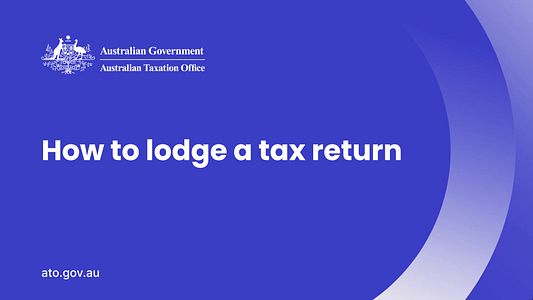Maximizing Tax Deductions in Australia: Tips and Tricks for the Upcoming Tax Year
Maximizing Tax Deductions in Australia: Tips and Tricks for the Upcoming Tax Year
Blog Article
Making Uses Of a Tax Return: Unlocking Possible Savings and Making Certain a Larger Tax Reimbursement
The tax obligation return serves as a crucial tool for people seeking to enhance their economic end results, offering numerous avenues for prospective cost savings and improved reimbursements. The intricacies of tax guidelines and the ever-evolving landscape of tax obligation regulation demand a thorough understanding of available options.
Understanding Tax Deductions
Many taxpayers may locate themselves overwhelmed by the intricacies of tax obligation reductions, yet comprehending these necessary elements is essential for taking full advantage of potential financial savings. Tax obligation reductions lower taxed revenue, therefore decreasing the total tax obligation responsibility for services and individuals. Familiarizing oneself with the various types of reductions readily available can substantially improve one's capability to enhance income tax return.
Deductions can be categorized into conventional and itemized reductions. The conventional deduction offers a set decrease in taxable revenue, while itemized deductions allow taxpayers to identify certain costs, such as mortgage rate of interest, state tax obligations, and charitable contributions. Taxpayers must analyze which choice produces the biggest benefit, as picking the suitable reduction technique can bring about considerable financial savings.
Moreover, it is very important to keep exact documents of insurance deductible costs throughout the tax obligation year. This practice not just helps with the preparation of income tax return however also assures conformity with internal revenue service demands. Taxpayers should also remain informed concerning changes in tax obligation laws that may influence eligible reductions, as these can differ yearly. By effectively passing through the landscape of tax obligation deductions, individuals can disclose the potential for a more desirable tax result and safe and secure greater monetary advantages.
Checking Out Tax Obligation Credit Ratings
Tax credit histories represent another notable opportunity for taxpayers to decrease their total tax obligation obligation, enhancing the advantages acquired from reductions. Unlike deductions, which reduced taxed revenue, tax credit histories supply a dollar-for-dollar decrease of the real tax obligation owed. This difference makes tax credit reports specifically beneficial for people looking for to maximize their cost savings.
There are two major sorts of tax obligation debts: nonrefundable and refundable. Nonrefundable credit ratings can reduce your tax obligation responsibility to no yet not below that amount, while refundable credit scores can cause a refund if the credits go beyond the tax owed. Examples of generally declared tax credit ratings consist of the Earned Earnings Tax Obligation Credit Scores (EITC), the Child Tax Obligation Credit report, and education-related credit histories like the American Opportunity Credit.
Eligibility demands for these credit scores can differ considerably, often based upon income, filing standing, and particular circumstances. Taxpayers must thoroughly evaluate the requirements associated with each credit score to determine they assert all advantages for which they certify. By strategically making use of available tax obligation credit histories, people can improve their income tax return, eventually causing substantial cost savings and possibly bigger reimbursements.

Investing Your Reimbursement Carefully
Obtaining a Tax refund can seem like a monetary windfall, however how that cash is made use of can exceptionally influence long-term monetary health. Instead of viewing your refund as disposable earnings, consider it an opportunity to purchase your future.

One effective alternative is adding to a Specific Retirement Account (INDIVIDUAL RETIREMENT ACCOUNT) This can boost your retirement savings while potentially producing tax benefits. Spending in a diversified stock portfolio can offer significant development capacity over time, permitting your refund to function for you in the market.
Furthermore, consider using your refund to pay down high-interest financial obligation, such as credit history card equilibriums. Reducing debt can improve your financial standing and ease stress and anxiety, inevitably enabling you to find out allocate more funds toward investments in the future.
For those concentrated on education and learning, using your refund for a 529 college savings strategy can assist safeguard a brighter future for yourself or your children.
Planning for Future Expenditures
Meticulously preparing for future expenditures is vital for maintaining economic stability and accomplishing lasting objectives. A well-structured monetary plan permits people to designate sources properly, guaranteeing that upcoming prices do not interrupt their financial wellness. Income tax return can offer a beneficial structure for this preparation procedure.
Utilizing the refund as a springboard, individuals can determine and focus on considerable future costs, such as home repair work, education costs, or medical care needs. Establishing a budget plan that integrates these anticipated expenses allows a positive technique, lessening the chance of economic pressure when the moment comes to resolve them.
Additionally, setting aside funds from your tax reimbursement into devoted interest-bearing accounts can boost the efficiency of your planning. Australian Tax return online. Think about producing a reserve particularly for unforeseen expenses, making sure that you are form 941 gotten ready for read this article unanticipated situations without thwarting your monetary objectives
Usual Blunders to Prevent
When managing their tax obligation returns that can undermine their monetary preparation efforts,Several people make important mistakes. One common mistake is falling short to maintain exact documents. Inadequate paperwork can lead to missed out on deductions, leading to a reduced refund or greater tax obligation obligation. It is important to keep organized records of all revenue, expenses, and tax-related papers throughout the year.
An additional frequent mistake is disregarding to evaluate tax obligation regulation changes. Tax guidelines can advance annually, and ignorance of these modifications might cause missed opportunities for tax obligation credit ratings or reductions. Furthermore, several taxpayers neglect qualified reductions, such as those for medical costs or instructional costs.

Filing taxes too early or too late can also be harmful. Early filers might lose out on final tax obligation breaks, while late filers risk penalties and rate of interest.
Furthermore, not seeking professional aid when necessary can result in expensive mistakes. Tax obligation specialists can provide beneficial understandings, ensuring compliance and making the most of prospective cost savings.
Last but not least, hurrying through the return can result in simple math errors or ignored types. Making the effort to confirm all entries is important for an effective income tax return result.
Final Thought
To sum up, the calculated utilization of tax obligation returns serves as a critical device for making the most of monetary advantages. Recognition of common risks can also enhance the tax procedure, ultimately encouraging taxpayers to take advantage of their returns for an extra secure monetary future.
Tax obligation credit scores represent an additional remarkable avenue for taxpayers to decrease their general tax obligation liability, matching the advantages gained from reductions. Unlike reductions, which reduced taxed revenue, tax obligation credit scores give a dollar-for-dollar reduction of the real tax obligation owed. Nonrefundable credit ratings can reduce your tax responsibility to zero but not listed below that quantity, while refundable credit reports can result in a reimbursement if the credit histories go beyond the tax obligation owed. Instances of frequently declared tax obligation credits include the Earned Earnings Tax Credit Rating (EITC), the Kid Tax Credit scores, and education-related credit scores like the American Possibility Credit Scores.
Tax regulations can advance annually, and lack of knowledge of these adjustments may result in missed out on opportunities for tax credit scores or deductions. - Australian Tax return online
Report this page